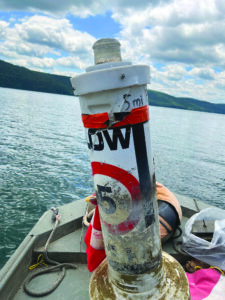Letter from Paul H. Lord
Hit and run at
5 Mile Point

I received a report on Monday morning that someone had observed “a pontoon boat run over the 5 Mile Point no wake buoy” which subsequently “sunk!”
On Friday morning, we assembled a team of two faculty members and three students and investigated the 5-mile Point buoy location (which is 105' deep; a challenging dive).
I found the buoy on the bottom, attached a lift bag and brought it up to within 20' of the surface where, upon inspection, we found what is depicted in the attached photo. We have never seen such damage to one of our buoys from a single impact.
You have reached your limit of 3 free articles
To Continue Reading
Our hard-copy and online publications cover the news of Otsego County by putting the community back into the newspaper. We are funded entirely by advertising and subscriptions. With your support, we continue to offer local, independent reporting that is not influenced by commercial or political ties.

